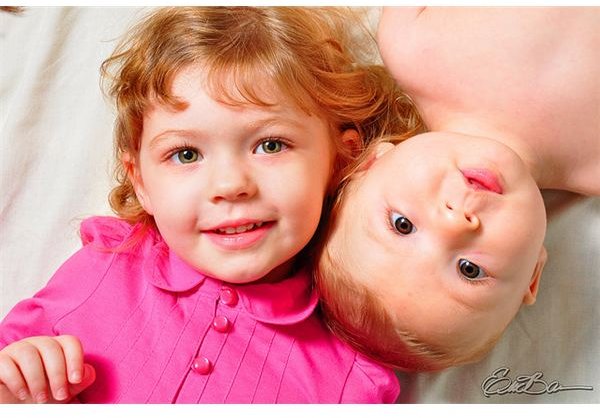Links Between Birth Order and Language Development
Typical Language Development in Children
The medical community uses standard milestones to assess whether a child’s language is developing properly. When a child does not progress appropriately, the health community looks to several factors to determine the cause. Birth order and language development are thought to be linked, and may be used to determine whether a delay is normal for a child or whether other problems, such as hearing problems or speech impediments, exist.
- One year old: Most children at this age understand simple instructions, respond to their name and may have a vocabulary of a few words or fragments of words.
- Two years old: The child’s vocabulary should contain 150 to 300 words, including objects that are familiar to him, as well as a few pronouns and prepositions.
- Three years old: Children should start to use plural words, and indicate past, present and future tense when speaking. Sentences of at least three words are common, and verbs dominate their language.
- Four years old: Children should be able to repeat words containing four syllables, verbalize extensively when participating in an activity and understand relationship concepts such as bigger or longer.
Firstborn vs. Laterborn Children
Although researchers tend to agree that there is a clear link between birth order and language development, they differ in their conclusions about how that link plays out.

Several studies have shown that laterborn children benefit from the exposure of conversation between the firstborn and parents or caretakers. One study conducted by researchers from McGill University and published in “Child Development” compared 16 firstborn and 16 secondborn children just before their second birthdays. The study’s goal was to determine the benefit, if any, of the secondborn children overhearing conversations between caregivers, parents and their older siblings. The study showed that while the secondborn children did not differ in their general language development, they displayed a much more advanced use of pronouns.
Conversely, some research studies carried out from 1975 through 2001 concluded that while firstborn children are exposed to more adult usage of language, laterborn children have more exposure to immature language and speech patterns of their siblings. This exposure impacted their performance on the verbal portions of intelligence tests that were administered to test their IQ scores. The study also concluded that speech and language development become more impacted as more children enter the family dynamics.
Twins

Twins and other multiples have a unique set of variables, despite their birth order. They often receive less adult speech directed at each of them as individuals, yet they often participate in three-way conversations where they may try to communicate with either the parent or co-twin. Studies conducted since the 1930s have demonstrated that twins’ language development is normally delayed, but that the twins catch up with their peers between the ages of two and five years old.
One study conducted by Yale professor J. Steven Reznick in 1996 agreed that twins do suffer delayed language development, but concluded that language and IQ development in twins may not be that different from children simply born lower in the birth order, or in families with a large number of children.
References
“Child Development”; Birth Order Effects on Early Language Development; Yuriko Oshima-Takane, Elizabeth Goodz, Jeffrey L. Derevensky; April, 1996
Human Intelligence: Does Birth Order Affect Intelligence?
Child Development Institute: Language Development in Children
Harvard University: Are Twins Delayed in Language Development?
“Child Development”; The MacMillan Psychology Reference Series; 2002
